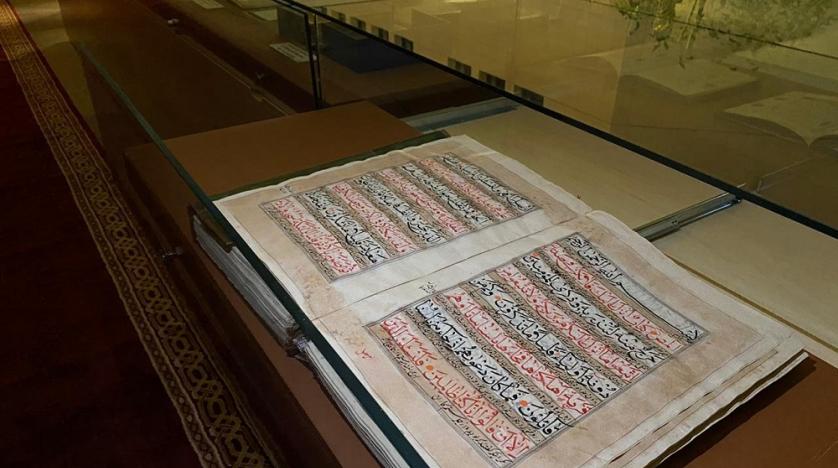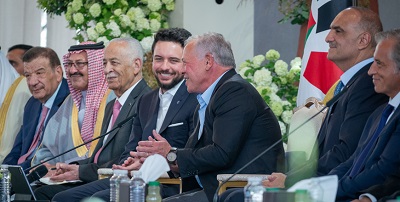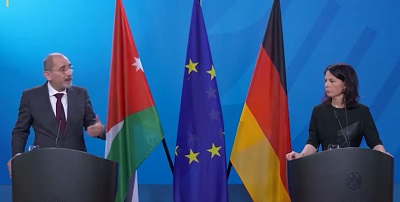Exclusive - 80,000 Arabic, Persian, Hebrew Manuscripts at King Fahad National Library

Asharq Al-Awsat
Manuscripts are an intellectual and literary treasure that have documented human life since man began to write. They are an honest record of the history of peoples, their traditions, activities and culture through the ages. Countries competed in writing down and preserving manuscripts that are collected by libraries around the world and protected by projects that aim at safeguarding man’s written cultural heritage.
The King Fahad National Library in Riyadh is among the libraries that have sought to collect manuscripts, prioritizing rare ones. It boasts 80,000 manuscripts: 6,000 original and 74,000 illuminated ones. The library set up a department for manuscripts and rarities. It collected manuscripts that were offered for sale and several unique donations from private libraries and individuals. The manuscripts cover a wide range of topics, such as religion, politics, economy and others. The library also acquired several non-Arabic manuscripts, most notably in Persian and Hebrew.
The majority of the manuscripts are written on regular paper, while a rare few are written on papyrus, vellum and parchment. The library has also acquired films, photographs and microfilms.
Secretary General of the King Fahad National Library Mohammad bin Abdulaziz Al-Rashid told Asharq Al-Awsat that the library has become a well-known cultural landmark. It is a vessel for the literary production, organization and documentation in Saudi Arabia.
Custodian of the Two Holy Mosques King Salman bin Abdulaziz had shown this library special attention since it was established in 1983, he added, saying it now rivals national libraries the world over.
Al-Rashid said the King Fahad National Library boasts several different and significant references on the Kingdom’s heritage given that it is responsible for preserving the Saudi national heritage. Among these sources are Saudi books, university theses, periodicals and the Saudi Arabian Information Center that boasts more than 70,000 photos that document the history of the Kingdom.
The library boasts more than 6,000 rare original manuscripts, including the Zad al-Maad by Ibn Qayyim. The manuscript was written by Suleiman bin Abdullah Ibn al-Sheikh Mohammed bin Abdulwahhab and dates back to the Hijri year 1220. Other manuscripts in the library’s collection include a Kufic Quran written on vellum and dating back to the third century Hijri, as well as Safavid, Mamluk and Andalusian Qurans. Among the rare manuscripts are parts of the Sahih al-Bukhari, written on vellum and dating to Andalusia in the year 570 Hijri.
In addition, the King Fahad National Library has acquired microfilms of one of the most important Arabic manuscripts from Princeton University Library in the United States. It also has photos of manuscripts from the American Jewish University. Moreover, all 792 manuscripts of the Public Saudi Riyadh Library were moved to the King Fahad National Library at the orders of King Salman when he was Governor of Riyadh and general supervisor of the library.
Al-Rashid said the library has a department for the sterilization and restoration of manuscripts. It is considered one of the best restoration centers in the region. It has granted access to the manuscripts to researchers and students through microfilm and microfiche devices. The King Fahad National Library constantly works on serving researchers, giving them easy access to information and offering its services 24 hours a day. It provides 14 electronic library services available online for users through its website.
Latest News
 King from Mafraq: Jordan’s security, sovereignty above all considerations
King from Mafraq: Jordan’s security, sovereignty above all considerations Sunak tells Netanyahu to “allow calm heads to prevail”
Sunak tells Netanyahu to “allow calm heads to prevail” Safadi, Germany’s Baerbock discuss war on Gaza, regional escalation
Safadi, Germany’s Baerbock discuss war on Gaza, regional escalation FM, EU commissioner discuss development cooperation, regional de-escalation
FM, EU commissioner discuss development cooperation, regional de-escalation Jon Stewart unpacks Iran launching missiles at Israel
Jon Stewart unpacks Iran launching missiles at Israel
Most Read Articles
- Senate president, Iraqi president discuss bilateral ties, regional issues
- King from Mafraq: Jordan’s security, sovereignty above all considerations
- Sunak tells Netanyahu to “allow calm heads to prevail”
- JHCO dispatches 75-truck convoy of food aid to Gaza
- UN agency finds unexploded 1,000-pound bombs in Gaza schools
- Sudanese rue shattered dreams as war enters second year
- Egyptian Foreign Minister condemns potential Palestinian displacement as 'war crime'
- Jordan monitors citizens in UAE amid weather concerns
- Making emerging technologies safe for democracy - By Marietje Schaake and Steven Schuurman, The Jordan Times
- Massive fire engulfs Copenhagen’s historic stock exchange